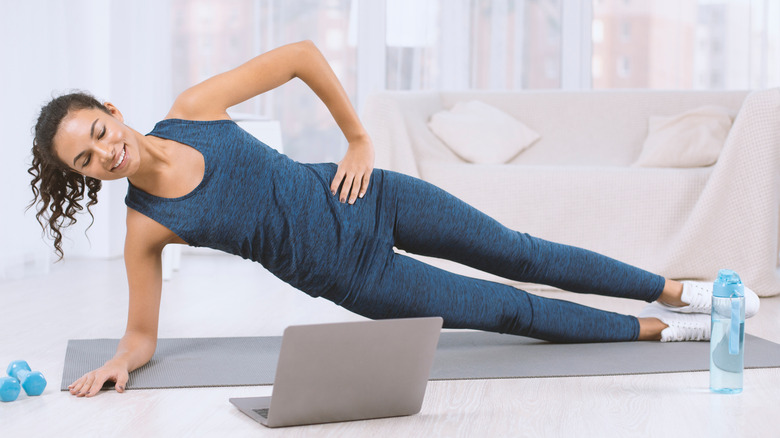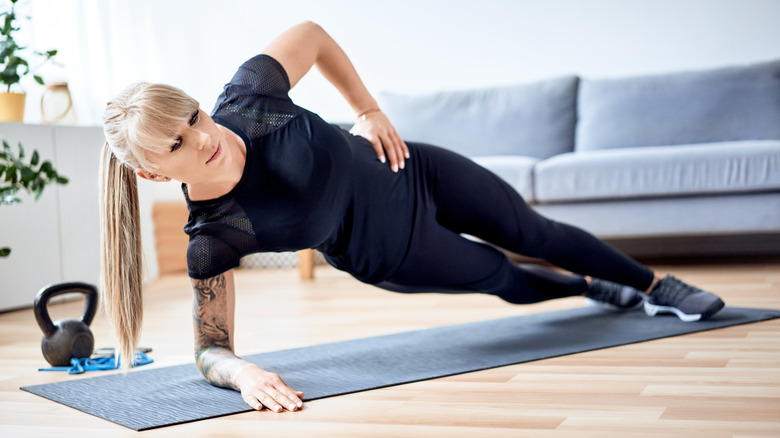What It Means When You Can't Hold Your Side Plank
Just about any source you look up on working your obliques and shaping your waist is going to tell you that a side plank needs to be your new best friend. And there's a good reason for that. Livestrong states that side planks work your core and back similar to regular planks but with the added bonus of working your glutes and legs too.
It's usually billed as a simple equipment-free exercise, which is another reason it's so popular. It can be done in apartments or hotels without disturbing the neighbors. And all you need to pull it off is some exercise clothes. That and the proper form, of course.
But keeping the proper form for a side plank is where it can get tricky for most people. It's easy to tip forward or back and sometimes keeping your hip up is hard to do. And then there's the risk of shoulder pain. Each issue is a signal of a larger problem that can — usually — be addressed through a modification to the exercise. And where it can't, there are other moves waiting to work your muscles until you can tackle a side plank, no problem!
Troubleshooting the weak spots
According to Livestrong, those who experience shoulder pain may need to work on engaging their shoulders and upper back more fully. By dropping their lower knee to the floor, they can take some of the pressure off so they can better focus. Exercises For Injuries also recommends strengthening the upper back and shoulders through different exercises so they are better able to handle the strain.
The best exercises for shoulder strength, according to Men's Health, usually involve overhead presses or rowing motions, usually with a set of hand weights or a tension band. These include a standing overhead press, incline bench press, and lateral raises.
People whose hips dip likely needed to strengthen their obliques. These are the outer waist and hip muscles. And while they can be difficult to target, there are a few specific workouts that SELF recommends. Exercises like bicycle crunches and side bends are great options. The best option, however, is a side plank hip dip. Simply let the hip dip to the floor, then lift it again into the proper form and hold for ten seconds before dipping again.
Side planks are an amazing oblique workout. And though they're billed as simple, some people may need to work up to them. The best way to do that is listen to what your body is telling you and focus on form while building up your strength where you need it. Pretty soon you'll be rocking the side plank and cranking up the difficulty with advanced variations.


